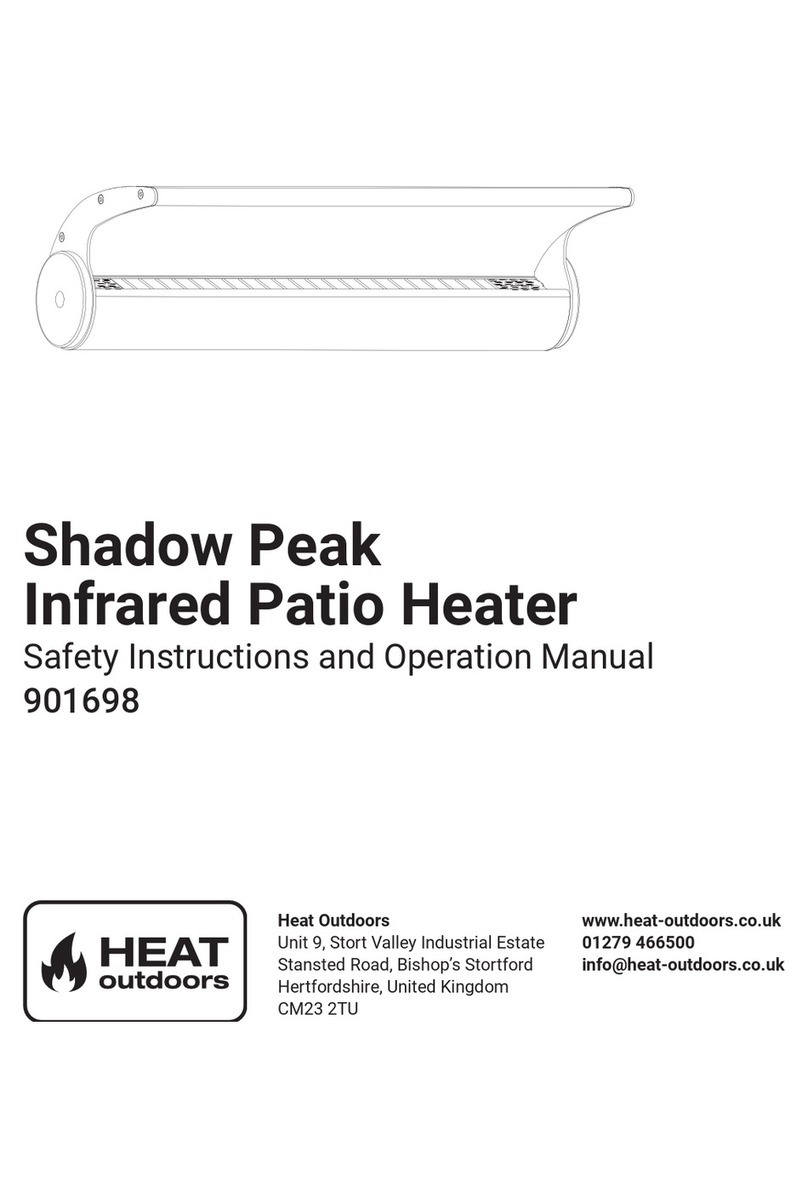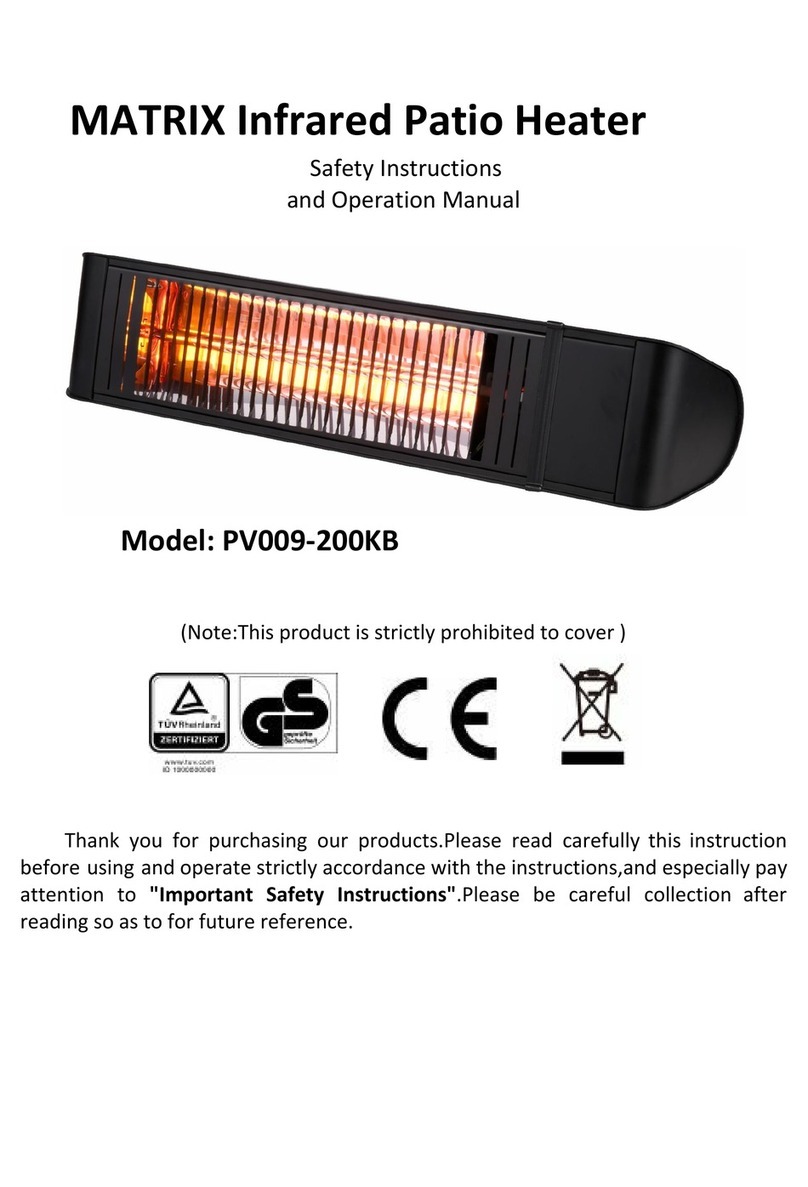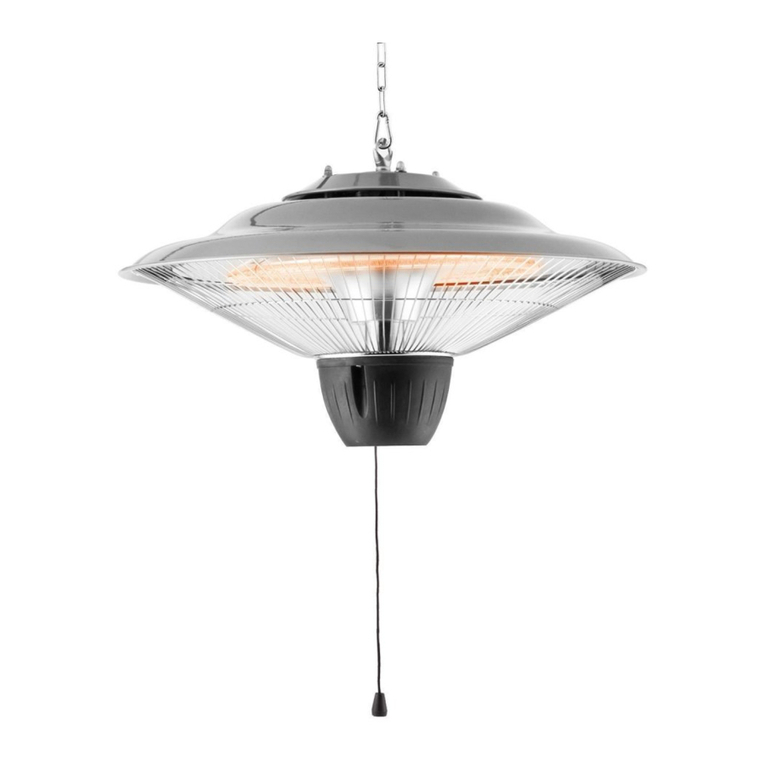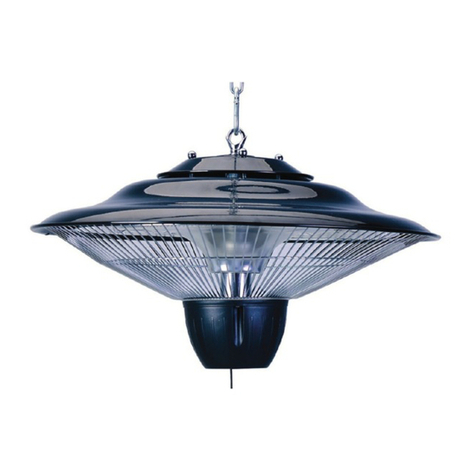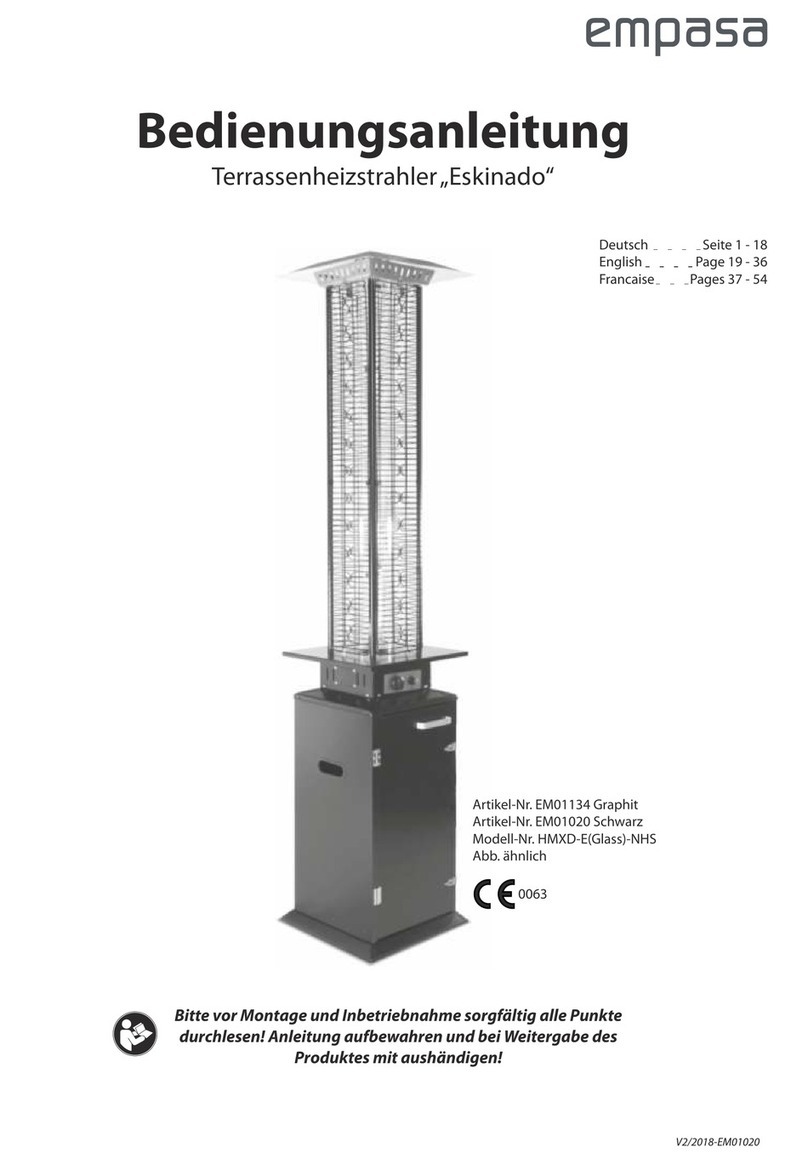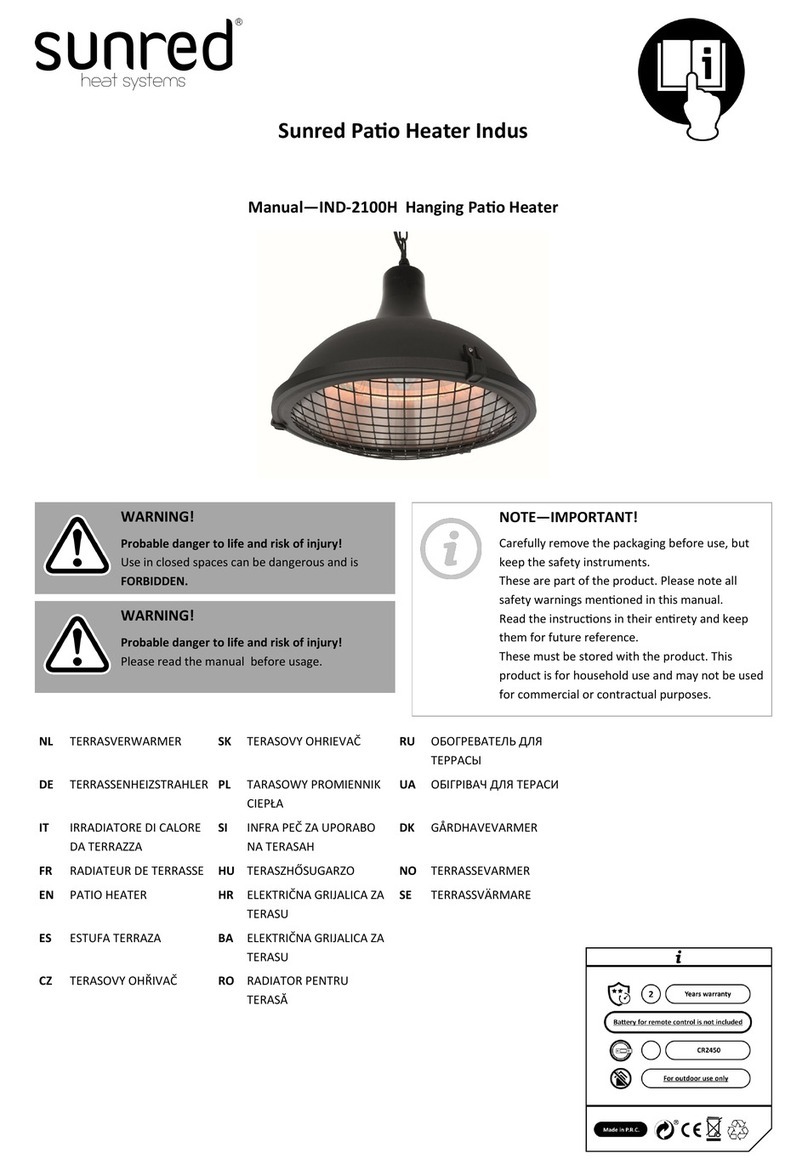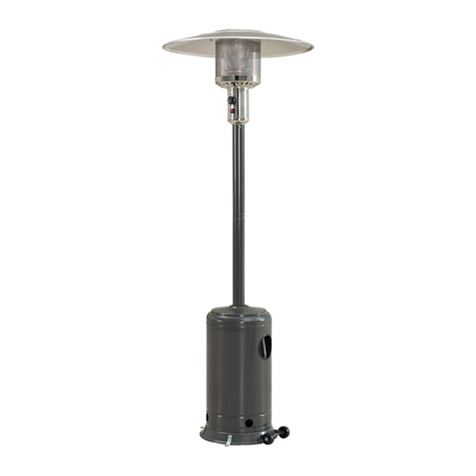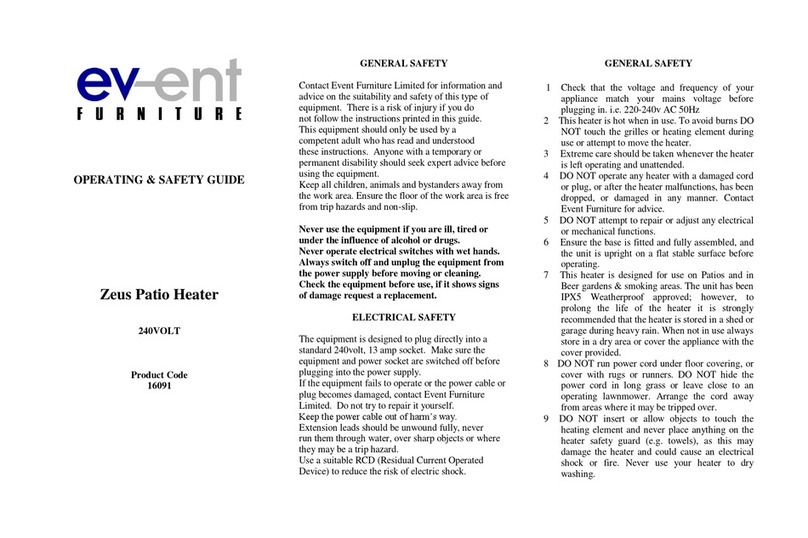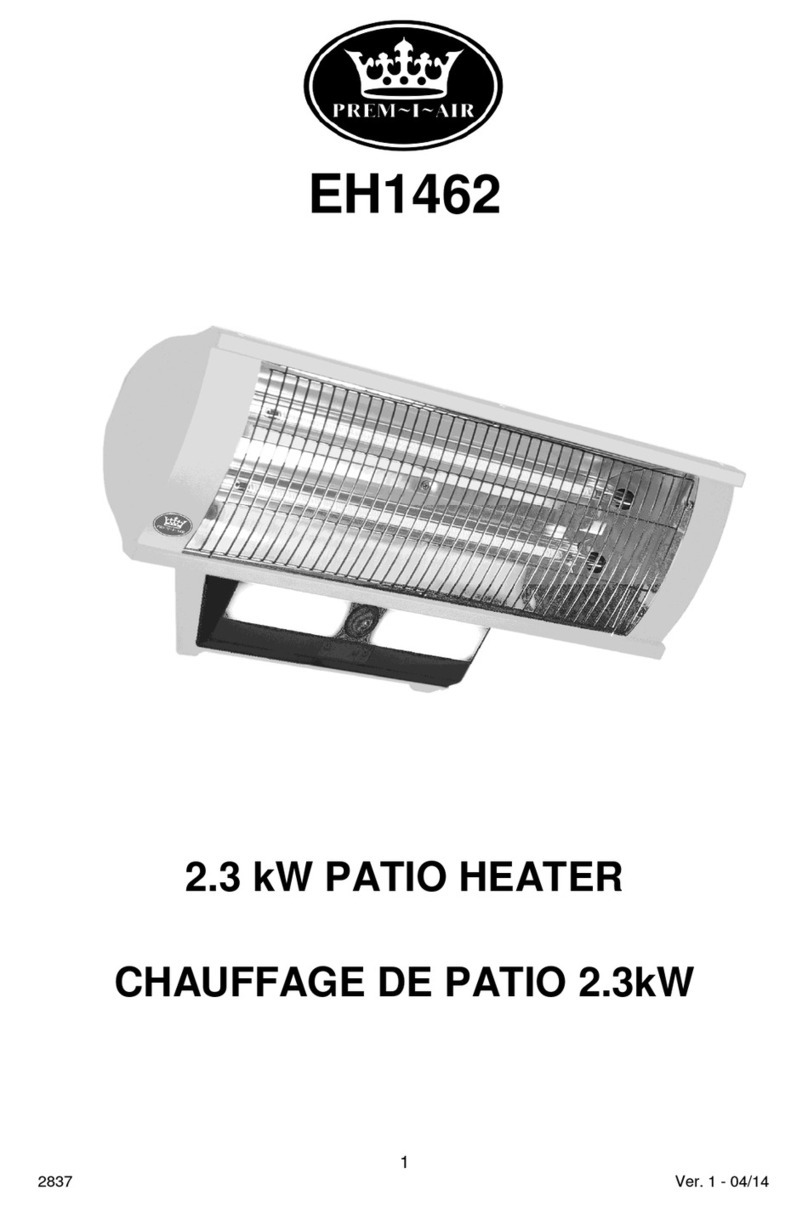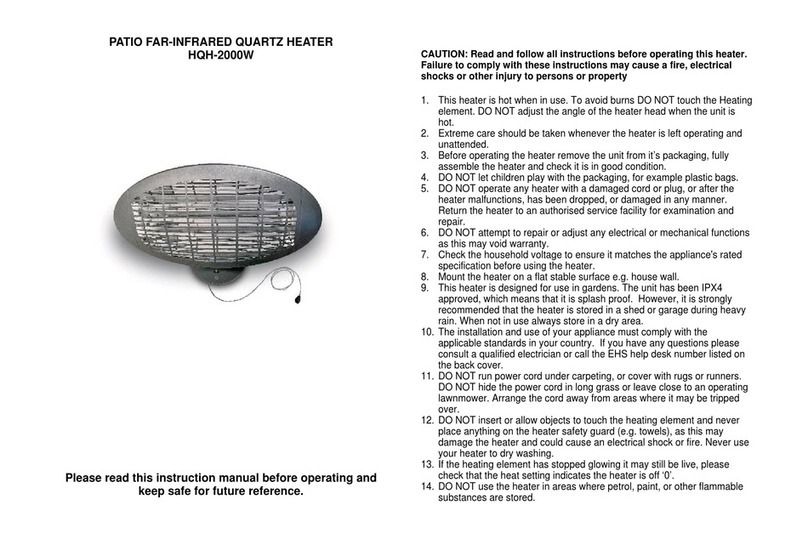
REPLACING THE GAS CYLINDER
1. Close the valve of the gas cylinder.
2. Disconnect the regulator from the cylinder following the instructions
that came with your regulator.
3. Replace the cylinder.
4. In the absence of any flame, remove the plug or seal cap from the
cylinder valve.
5. Check for the presence and good state of the gasket before
connecting the regulator.
6. Perform leak test using soapy water solution.
STORAGE
WARNING
1. Changing of cylinder must
be undertaken in a flame-
free atmosphere.
2. Make sure that gas taps
on the consuming
appliance are in closed
position.
Always close the valve of the gas cylinder after use or in case of a disturbance.
Remove the pressure regulator and the hose attachment if the heater is not to be used for a period of
time.
Cylinder must be stored outdoors in a well-ventilated area out of the reach of children.
Disconnected cylinder must have threaded valve plugs tightly installed and must not be stored in garage
or any other enclosed area.
Storage of heater indoors is permissible only if the cylinder is disconnected and removed from the
heater.
Check the tightness of the gas valve and for damage. If you suspect damage, have it changed by your
gas dealer.
Never store liquid gas cylinder in a sub-terrain, or at places without adequate air ventilation.
CLEANING AND CARE
Wipe off powder coated surfaces with soft, moist rag and soapy
water. Do not clean heater with cleaners that are combustible or
corrosive.
Remove debris, spider and insect nests from ventilation opening of
the cylinder enclosure, control compartment, burner and circulation
air passageways of the heater with heavy-duty pipe cleaner or
compressed air to keep appliance clean and safe for use. Never
clear ports or other openings with toothpicks or other article that will
break and block the ports.
If carbon deposits develop, remove the reflector and flame screen
and clean them with soap water. Do not paint the flame screen,
control panel or reflector.
Cover the burner unit with the supplied protective cover when the
heater is not in use. Wait until the heater is completely cooled down
before covering.
In a salt-air environment, such as near an ocean, corrosion occurs
more quickly than normal. Check frequently for corroded areas and
repair them promptly.
WARNING
1. Do not perform
maintenance right after the
heater has been turned off,
wait until the temperature
has cooled down.
2. Do not expose the pilot,
controllers and parts
underneath the burner to
water. Do not use the
heater if any of these parts
are exposed to water until
the appliance is inspected
or repaired by a qualified
service person.






















